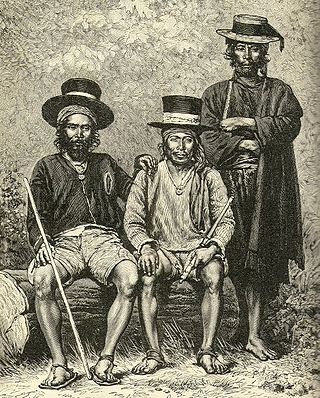
Alcalde is the traditional Spanish municipal magistrate, who had both judicial and administrative functions. An alcalde was, in the absence of a corregidor, the presiding officer of the Castilian cabildo and judge of first instance of a town. Alcaldes were elected annually, without the right to reelection for two or three years, by the regidores of the municipal council. The office of the alcalde was signified by a staff of office, which they were to take with them when doing their business. A woman who holds the office is termed an Alcaldesa.

The United States District Court for the District of Puerto Rico is the federal district court whose jurisdiction comprises the Commonwealth of Puerto Rico. The court is based in San Juan. The main building is the Clemente Ruiz Nazario United States Courthouse located in the Hato Rey district of San Juan. The magistrate judges are located in the adjacent Federico Degetau Federal Building, and several senior district judges hold court at the Jose V. Toledo Federal Building and U.S. Courthouse in Old San Juan. The old courthouse also houses the U.S. Bankruptcy Court. Most appeals from this court are heard by the United States Court of Appeals for the First Circuit, which is headquartered in Boston but hears appeals at the Old San Juan courthouse for two sessions each year. Patent claims as well as claims against the U.S. government under the Tucker Act are appealed to the Federal Circuit.

The Mayor of Ponce is the head of government of Ponce, Puerto Rico. The current mayor is Luis Irizarry Pabón.
Julián H. Villodas was Mayor of Ponce, Puerto Rico, from 1 January 1827 – 31 December 1830. He performed as a teniente a guerra.

José Ortiz de la Renta was Mayor of Ponce, Puerto Rico, from 1812 to 1814, 1815 to 1816, 1820 to 1821, 1823 to 1826, 1837 to 1838, 1842 to 1843, 1843 to 1844, and in 1846. He has the distinction of having held the office of mayor of Ponce the most — eight times. He was an hacendado.
Juan de Dios Conde was mayor of Ponce, Puerto Rico, in 1836 and again in 1839.
José de Toro was Mayor of Ponce, Puerto Rico, in two occasions: 1814 and in 1820. In 1814, he performed as a teniente a guerra mayor, while from 3 June 1820 until later that year he performed as Alcalde ordinario.
Alcalde ordinario refers to the judicial and administrative officials in the cabildos in the Spanish Viceroyalties in the Americas during the times of the Spanish Empire in the 16th through 19th centuries. Always existing in pairs, they were called Alcalde de primer voto and Alcalde de segundo voto. The alcalde ordinario was a judicial magistrate who, with some exceptions, was responsible for the administration of civil and criminal justice within their municipal jurisdiction.
Alejandro Ordóñez was Mayor of Ponce, Puerto Rico, from 3 January 1816 to 31 December 1818. He was a teniente justicia mayor.
Pedro Sánchez de Mathos was the first municipal magistrate of Ponce, Puerto Rico, in 1692. He was appointed mayor by the Governor of Puerto Rico, Juan Robles de Lorenzana. He had been regidor in San German in 1676 and was its mayor in 1688.
Fernando Diez de Ulzurrún y Somellera was Mayor of Ponce, Puerto Rico, from 10 July 1887 to 4 January 1888. Ulzurrún y Somellera mayored a city of 42,388 inhabitants.
Demetrio Santaella was Mayor of Ponce, Puerto Rico, from 22 January 1867 to 31 December 1868.
Francisco José de Mercado was interim mayor of Ponce, Puerto Rico, from early in 1822 to 31 December 1822.
Rafael de Zárate y Sequera was Mayor of Ponce, Puerto Rico, from 11 June 1884 to 16 July 1886.
Teniente a guerra was a title used in times of the Spanish colonial Empire to describe a position exercising duties similar to those exercised by a town or city mayor today (2019). A teniente a guerra was a position that combined the duties of mayor, military lieutenant and justice of the peace.
Antonio Albizu was Mayor of Ponce, Puerto Rico, from 1 January 1836 to sometime later in 1836, when Juan de Dios Conde took over the mayoral administration.
Alcalde de la Santa Hermandad was a term used in the Spanish colonies in the Americas during the times of the Spanish Empire. The term referred to judicial magistrates named in towns and villages within the jurisdiction of the Spanish Empire in the Americas whose function was primarily to be informed of infractions committed in rural areas against the established order, so they could be prosecuted. In this capacity, their primary function was to help the militia of a rural region within the jurisdiction of a cabildo. This militia was organized under an institution termed Santa Hermandad. The term of service of an Alcalde de la Santa Hermandad was one year. The position was eliminated around 1835, when the Santa Hermandad force itself was disestablished.

Partido was a Spanish colonial term that referred to a governed local administrative region, roughly equivalent to today's municipality in terms of rural land areas included, and used in the Spanish colonies in the Americas during the times of the Spanish Empire. It was "the territory or district composed of a jurisdiction or administration from a main city."





